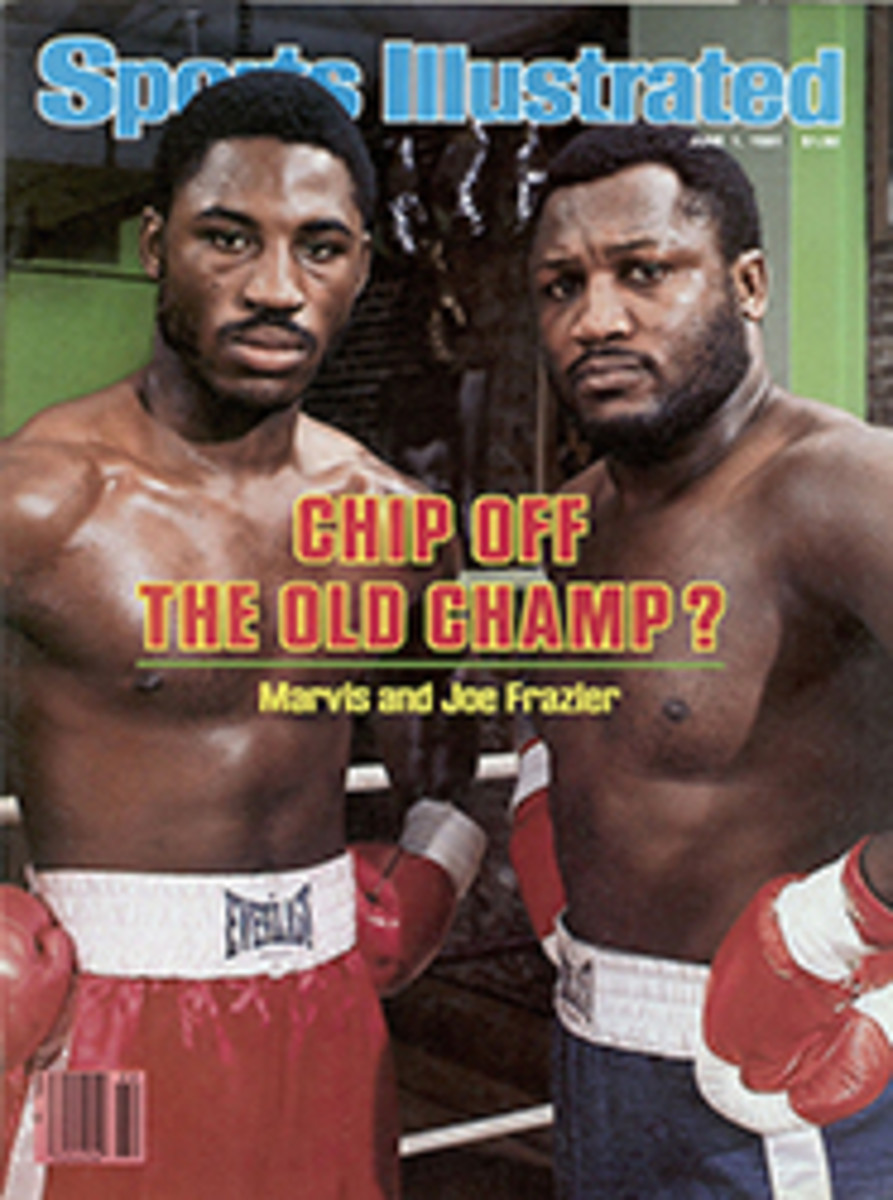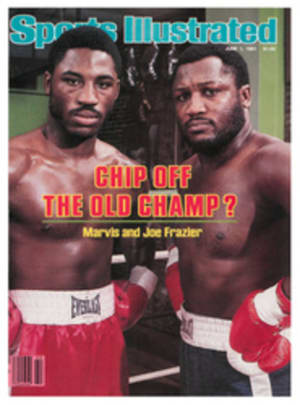
'Keep the continent on the left'
Six years ago the Worrell 1,000-mile ocean race was conceived as an "unencumbered tangle with nature." In the beginning, its conceiver, Mike Worrell, a Virginia Beach, Va. restaurateur with a constant itch, was so taken by the idea that he encumbered the competitors with almost no rules at all. The five two-man crews that sailed 16-foot Hobie catamarans in the first race were simply instructed that from the starting line on the beach at Fort Lauderdale, Fla. they should keep the North American continent on their left and proceed north to the finish in Virginia Beach. Each crew was required to telephone race headquarters at Worrell's restaurant once every 24 hours, but that was about the extent of the rules.
In its first three years or so, the reputation of the Worrell 1000 was greatly overblown. After a crew showed up from faraway Hawaii for the second race in 1977, the event was touted as one of "worldwide interest." Before it was four years old, the event was already swaddled in clichès. It was variously described as "the ultimate challenge" and a "grueling test" that pitted the "indomitable spirit of man" against a "sleeping giant," i.e., the Atlantic Ocean.
Today the Worrell 1000 has strict regulations involving safety equipment and required checkpoints so that boats won't be tempted to venture more than 20 miles offshore and so that a third crewman can swing shift on each boat, thereby decreasing the hazard induced by fatigue. Despite these trammels, the race has prospered. Now it is truly international. In the race that ended last Saturday, in addition to mainland Yanks and two Hawaiians representing a New York State distillery, there were three New Zealanders who live in California and sailed for a Norfolk, Va. radio station. There were also three Aussies, on a boat called Australia partly backed by Qantas Airlines and Aristocrat Slot Machines, and also a team of South Africans who had plucked $40,000 out of their own pockets in order to take their lumps.
In the first competition, race headquarters consisted of whichever bartender was on duty in Worrell's restaurant. Worrell, then 32, not only served as the entire race committee, but also competed in the event and won it. This year the race committee numbered close to two dozen. Race headquarters had four telephones, which were steadily manned to keep tabs on the 11 boats entered.
But the Worrell 1000 remains a tough, exhausting, seat-of-the-pants race. If it isn't the ultimate test of sailing, it's certainly a unique one. While plying the briny in $250,000 hulls, have any SORC sailors ever been threatened by sea turtles? In the Sydney-Hobart Race has any helmsman hugged the coast so closely that he ran over the line of a surf fisherman battling a 310-pound tiger shark? In the Fastnet Race, has any skipper strayed so far into an estuary that he ended up high and dry when the tide ran out? Has any navigator in the Annapolis-Newport Race ever tried to make it all the way using only a service-station road map? Such things happen in the Worrell 1000.
Failure to finish is no disgrace. In the races to date only 23 of 50 entries have completed the course. In the first race, winner Worrell was also the only finisher. For more than 700 miles he had a nip-and-tuck battle with a rival skipper, an airline pilot named Peter Guthrie. The race might have gone down to the wire, except that on the final leg from Cape Hatteras, the so-called "graveyard of the Atlantic," to Virginia Beach, the road map Guthrie was using became so soggy it came apart at a crease. In patching it, Guthrie canted the coastline eastward. After he had wandered afar, a man on a trawler informed Guthrie that on his present heading he would end up somewhere between New York and Cape Cod.
Last year all nine entries reached Virginia Beach, riding most of the time on brisk winds slightly abaft the beam that are much to the liking of Hobie cats. This year, as if to make amends for that beneficence, the sleeping Atlantic giant toyed with the sailors a while, served up a thunderstorm or two, then delivered a wallop that almost knocked out the whole fleet. By the time the lead boats reached the last checkpoint just short of Cape Hatteras, the barometer was dropping and the wind rising. Seven of the 11 boats did finally finish at Virginia Beach, but four of them had trailered their craft around Cape Hatteras and sailed a drastically shortened distance. Of the three that made it under sail around the Cape, only one, the winning rookie team, from Australia, covered the full course, riding up onto the sand at Virginia Beach last Saturday morning.
Weather Mark led for the first leg, which terminated at Cocoa Beach, 160 miles north of Fort Lauderdale. The Shack, sponsored by a Virginia Beach restaurant-lounge of the same name, took over on the second leg before Weather Mark regained the lead and lost it again. Mark was running third, a scant seven minutes out of first, when it was beset by violent, squally winds and withdrew, the crew suffering from hypothermia.
On the second leg, a whopper of a sea turtle made, its mark in the night. Mick Whitehead, a former Hobie 16 world champion from Cape Town, South Africa and his crewman, Eric Hasselbach, saw a dark mound suddenly rise dead ahead. In the next instant, a turtle almost the size of their boat's trampoline emerged astern, tossed a two-foot-long flipper in the air, reared its head as if in disdain, then sounded. The turtle had opened a five-inch gash in one hull and the South Africans were lucky to make the next checkpoint without foundering.
Because his son, Hobie Jr., a three-time national Hobie cat champion, was on The Shack, Hobie Alter, producer of the cats, was on hand for the race. Midway up the coast with The Shack well ahead and the Australians back in fourth, more than an hour behind, Hobie Sr. warned, "The Australians are the only ones I would worry about now. They are fast, and they'll be very fast when it blows." As predicted, when the winds piped up off Carolina, the Aussies began to move.
At the next-to-last checkpoint, 210 miles from the finish, it became a race between two curiously handicapped boats: Australia and Cool Cat, sponsored by a cooler manufacturer. Because none of the Aussies had seen the U.S. East Coast before, they were definitely short on local knowledge. The members of the Cool Cat crew were sailing veterans, but they were short on manpower. The most experienced of them, student naval aviator Richard Wallio, had to report back to duty at the Meridian (Miss.) Naval Air Station twice during the race.
Confused by the profusion of winking, blinking markers, the Aussies put ashore twice to inquire where they were, but got little help. A lady they waked at 4 a.m. south of Cocoa Beach told them they had 80 miles yet to sail when they actually had about half that. Two days later, in the first light of dawn, when the Aussies emerged bedraggled from the sea seeking Myrtle Beach, S.C., two startled ladies informed them that the town was a half-hour farther along, then fled, without explaining whether it was a half-hour by boat or car or goat cart.
Australia, carrying full sail in the 25-mph winds, had worked out a nine-minute, 55-second lead on the reefed Cool Cat, at the final checkpoint near the tip of Cape Hatteras. After a three-minute, 25-second stop to get everything in order for the prolonged horror that lay on the windward side of the Cape, Australia took off, presuming Cool Cat would soon follow. Cool tarried for more than an hour and a half, to let the exhausted crewmen dry out and rest. As Australia struggled up the final northerly leg, the wind was gusting to 40. After rounding the Cape well behind the Aussies, Cool Cat slogged only four miles north, then the crew said to hell with it and repaired to a motel. After she cleared the Cape roughly two hours later, The Shack only went a half-mile before putting ashore.
At 6:30 p.m. last Wednesday, Race Chairman Worrell yellow-flagged the race by radio, but having no receiver, the Aussies carried on through a tangle of 10-foot waves. They capsized once but recovered in good order. Fisherman Curt Prentice, who watched Australia toward nightfall, reported, "They were traveling up and down farther than they were forward. Those boys must have doodads in their brains to be out in seas like that."
Several hours after dark, 84 miles from the finish, the head fitting of the Aussie mainsail failed. They struggled for shore under jib, barely missing the skeleton of a ship that had lain long in the notorious Hatteras graveyard. A wave came down on their stern with such force that the twin bows shot up and backward while spinning. In effect, the boat performed a gainer with a half-twist and landed upside down, her mast broken.
The storm persisted for another 24 hours. When it finally subsided, to complete the race Australia was trailered back down to a point five miles north of the tip of Cape Hatteras. Cool and Shack were advanced to the same starting line. After Australia set off toward the finish, the other two were held for the same time margin by which they had trailed Australia at the final checkpoint below Cape Hatteras two days earlier. Four other boats that had never rounded the Cape and had trailed the leaders by margins of from nine to 15 hours, were allowed to take off from the same starting line with handicaps ranging from 4½ to 6½ hours. To shorten a course is reasonable, but to allow boats to continue that haven't completed a portion of a course that their rivals have, makes no sense in any race. But then the Worrell 1000 isn't the sort of affair that can absorb too much logic and still retain its character. Put too much sense into it and it might end up becoming just another staid yacht race. It's too worthwhile an event to suffer such a sorry fate.
PHOTO
The 11-boat fleet shoves off at Fort Lauderdale into waters that wouldn't be millpond-smooth long.
PHOTO
Seven days later, the Aussies land in Virginia.

